Mengchu Zhou
Petri Net Modeling and Deadlock-Free Scheduling of Attachable Heterogeneous AGV Systems
Aug 01, 2025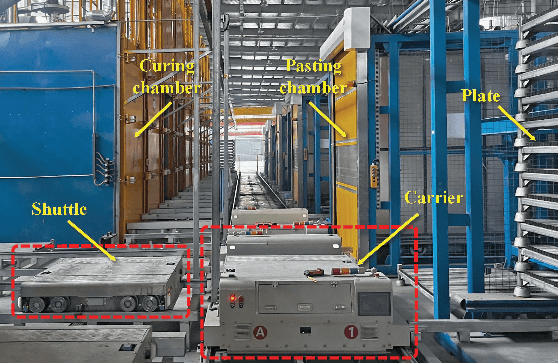
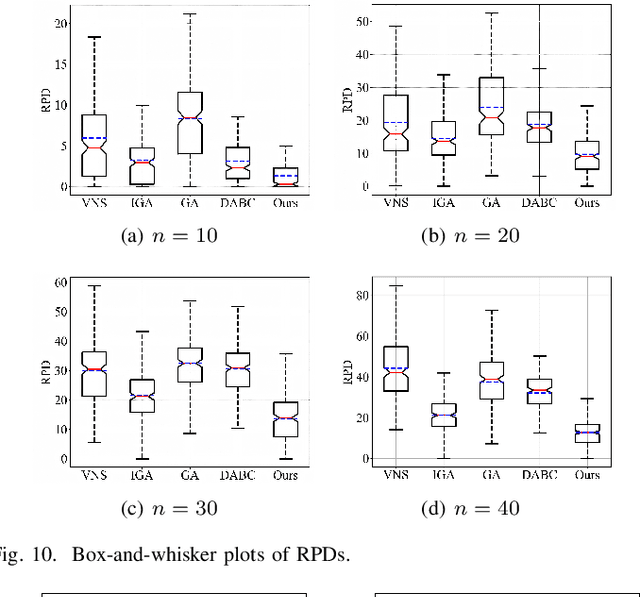
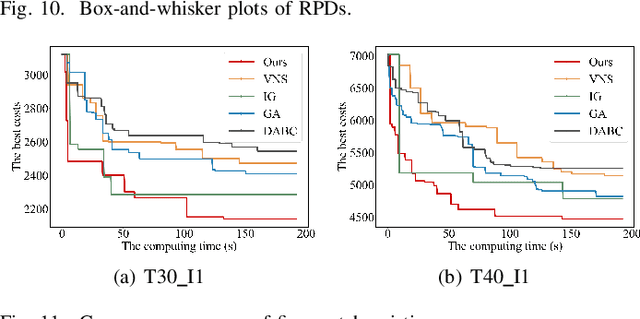
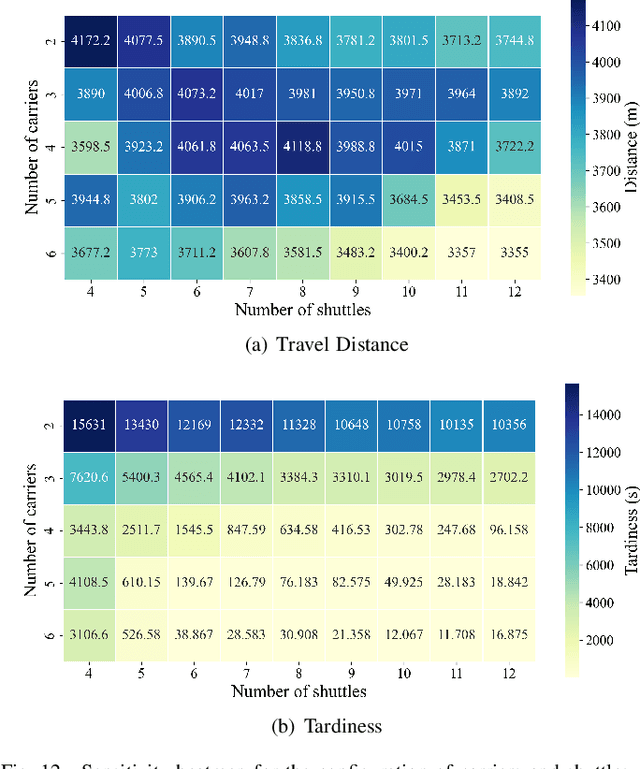
Abstract:The increasing demand for automation and flexibility drives the widespread adoption of heterogeneous automated guided vehicles (AGVs). This work intends to investigate a new scheduling problem in a material transportation system consisting of attachable heterogeneous AGVs, namely carriers and shuttles. They can flexibly attach to and detach from each other to cooperatively execute complex transportation tasks. While such collaboration enhances operational efficiency, the attachment-induced synchronization and interdependence render the scheduling coupled and susceptible to deadlock. To tackle this challenge, Petri nets are introduced to model AGV schedules, well describing the concurrent and sequential task execution and carrier-shuttle synchronization. Based on Petri net theory, a firing-driven decoding method is proposed, along with deadlock detection and prevention strategies to ensure deadlock-free schedules. Furthermore, a Petri net-based metaheuristic is developed in an adaptive large neighborhood search framework and incorporates an effective acceleration method to enhance computational efficiency. Finally, numerical experiments using real-world industrial data validate the effectiveness of the proposed algorithm against the scheduling policy applied in engineering practice, an exact solver, and four state-of-the-art metaheuristics. A sensitivity analysis is also conducted to provide managerial insights.
HQViT: Hybrid Quantum Vision Transformer for Image Classification
Apr 03, 2025



Abstract:Transformer-based architectures have revolutionized the landscape of deep learning. In computer vision domain, Vision Transformer demonstrates remarkable performance on par with or even surpassing that of convolutional neural networks. However, the quadratic computational complexity of its self-attention mechanism poses challenges for classical computing, making model training with high-dimensional input data, e.g., images, particularly expensive. To address such limitations, we propose a Hybrid Quantum Vision Transformer (HQViT), that leverages the principles of quantum computing to accelerate model training while enhancing model performance. HQViT introduces whole-image processing with amplitude encoding to better preserve global image information without additional positional encoding. By leveraging quantum computation on the most critical steps and selectively handling other components in a classical way, we lower the cost of quantum resources for HQViT. The qubit requirement is minimized to $O(log_2N)$ and the number of parameterized quantum gates is only $O(log_2d)$, making it well-suited for Noisy Intermediate-Scale Quantum devices. By offloading the computationally intensive attention coefficient matrix calculation to the quantum framework, HQViT reduces the classical computational load by $O(T^2d)$. Extensive experiments across various computer vision datasets demonstrate that HQViT outperforms existing models, achieving a maximum improvement of up to $10.9\%$ (on the MNIST 10-classification task) over the state of the art. This work highlights the great potential to combine quantum and classical computing to cope with complex image classification tasks.
SeMi: When Imbalanced Semi-Supervised Learning Meets Mining Hard Examples
Jan 10, 2025



Abstract:Semi-Supervised Learning (SSL) can leverage abundant unlabeled data to boost model performance. However, the class-imbalanced data distribution in real-world scenarios poses great challenges to SSL, resulting in performance degradation. Existing class-imbalanced semi-supervised learning (CISSL) methods mainly focus on rebalancing datasets but ignore the potential of using hard examples to enhance performance, making it difficult to fully harness the power of unlabeled data even with sophisticated algorithms. To address this issue, we propose a method that enhances the performance of Imbalanced Semi-Supervised Learning by Mining Hard Examples (SeMi). This method distinguishes the entropy differences among logits of hard and easy examples, thereby identifying hard examples and increasing the utility of unlabeled data, better addressing the imbalance problem in CISSL. In addition, we maintain a class-balanced memory bank with confidence decay for storing high-confidence embeddings to enhance the pseudo-labels' reliability. Although our method is simple, it is effective and seamlessly integrates with existing approaches. We perform comprehensive experiments on standard CISSL benchmarks and experimentally demonstrate that our proposed SeMi outperforms existing state-of-the-art methods on multiple benchmarks, especially in reversed scenarios, where our best result shows approximately a 54.8\% improvement over the baseline methods.
A Sparse Cross Attention-based Graph Convolution Network with Auxiliary Information Awareness for Traffic Flow Prediction
Dec 14, 2023Abstract:Deep graph convolution networks (GCNs) have recently shown excellent performance in traffic prediction tasks. However, they face some challenges. First, few existing models consider the influence of auxiliary information, i.e., weather and holidays, which may result in a poor grasp of spatial-temporal dynamics of traffic data. Second, both the construction of a dynamic adjacent matrix and regular graph convolution operations have quadratic computation complexity, which restricts the scalability of GCN-based models. To address such challenges, this work proposes a deep encoder-decoder model entitled AIMSAN. It contains an auxiliary information-aware module (AIM) and sparse cross attention-based graph convolution network (SAN). The former learns multi-attribute auxiliary information and obtains its embedded presentation of different time-window sizes. The latter uses a cross-attention mechanism to construct dynamic adjacent matrices by fusing traffic data and embedded auxiliary data. Then, SAN applies diffusion GCN on traffic data to mine rich spatial-temporal dynamics. Furthermore, AIMSAN considers and uses the spatial sparseness of traffic nodes to reduce the quadratic computation complexity. Experimental results on three public traffic datasets demonstrate that the proposed method outperforms other counterparts in terms of various performance indices. Specifically, the proposed method has competitive performance with the state-of-the-art algorithms but saves 35.74% of GPU memory usage, 42.25% of training time, and 45.51% of validation time on average.
Transaction Fraud Detection via an Adaptive Graph Neural Network
Jul 11, 2023



Abstract:Many machine learning methods have been proposed to achieve accurate transaction fraud detection, which is essential to the financial security of individuals and banks. However, most existing methods leverage original features only or require manual feature engineering. They lack the ability to learn discriminative representations from transaction data. Moreover, criminals often commit fraud by imitating cardholders' behaviors, which causes the poor performance of existing detection models. In this paper, we propose an Adaptive Sampling and Aggregation-based Graph Neural Network (ASA-GNN) that learns discriminative representations to improve the performance of transaction fraud detection. A neighbor sampling strategy is performed to filter noisy nodes and supplement information for fraudulent nodes. Specifically, we leverage cosine similarity and edge weights to adaptively select neighbors with similar behavior patterns for target nodes and then find multi-hop neighbors for fraudulent nodes. A neighbor diversity metric is designed by calculating the entropy among neighbors to tackle the camouflage issue of fraudsters and explicitly alleviate the over-smoothing phenomena. Extensive experiments on three real financial datasets demonstrate that the proposed method ASA-GNN outperforms state-of-the-art ones.
Transfer Learning for Fault Diagnosis of Transmission Lines
Jan 20, 2022



Abstract:Recent artificial intelligence-based methods have shown great promise in the use of neural networks for real-time sensing and detection of transmission line faults and estimation of their locations. The expansion of power systems including transmission lines with various lengths have made a fault detection, classification, and location estimation process more challenging. Transmission line datasets are stream data which are continuously collected by various sensors and hence, require generalized and fast fault diagnosis approaches. Newly collected datasets including voltages and currents might not have enough and accurate labels (fault and no fault) that are useful to train neural networks. In this paper, a novel transfer learning framework based on a pre-trained LeNet-5 convolutional neural network is proposed. This method is able to diagnose faults for different transmission line lengths and impedances by transferring the knowledge from a source convolutional neural network to predict a dissimilar target dataset. By transferring this knowledge, faults from various transmission lines, without having enough labels, can be diagnosed faster and more efficiently compared to the existing methods. To prove the feasibility and effectiveness of this methodology, seven different datasets that include various lengths of transmission lines are used. The robustness of the proposed methodology against generator voltage fluctuation, variation in fault distance, fault inception angle, fault resistance, and phase difference between the two generators are well shown, thus proving its practical values in the fault diagnosis of transmission lines.
Frequent Itemset-driven Search for Finding Minimum Node Separators in Complex Networks
Jan 18, 2022



Abstract:Finding an optimal set of critical nodes in a complex network has been a long-standing problem in the fields of both artificial intelligence and operations research. Potential applications include epidemic control, network security, carbon emission monitoring, emergence response, drug design, and vulnerability assessment. In this work, we consider the problem of finding a minimal node separator whose removal separates a graph into multiple different connected components with fewer than a limited number of vertices in each component. To solve it, we propose a frequent itemset-driven search approach, which integrates the concept of frequent itemset mining in data mining into the well-known memetic search framework. Starting from a high-quality population built by the solution construction and population repair procedures, it iteratively employs the frequent itemset recombination operator (to generate promising offspring solution based on itemsets that frequently occur in high-quality solutions), tabu search-based simulated annealing (to find high-quality local optima), population repair procedure (to modify the population), and rank-based population management strategy (to guarantee a healthy population). Extensive evaluations on 50 widely used benchmark instances show that it significantly outperforms state-of-the-art algorithms. In particular, it discovers 29 new upper bounds and matches 18 previous best-known bounds. Finally, experimental analyses are performed to confirm the effectiveness of key algorithmic modules of the proposed method.
IoT-based Route Recommendation for an Intelligent Waste Management System
Jan 01, 2022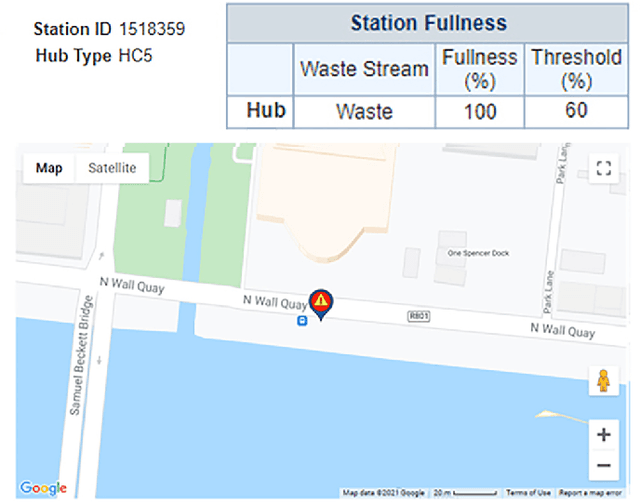

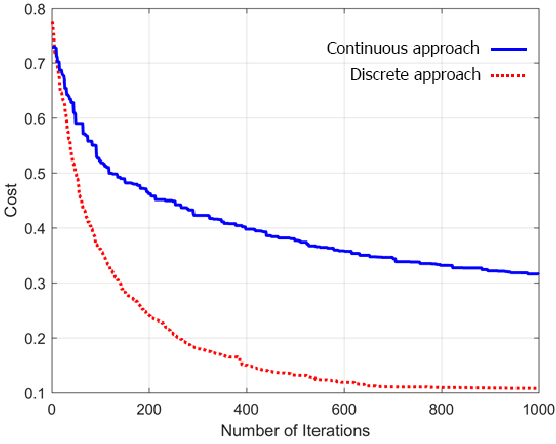
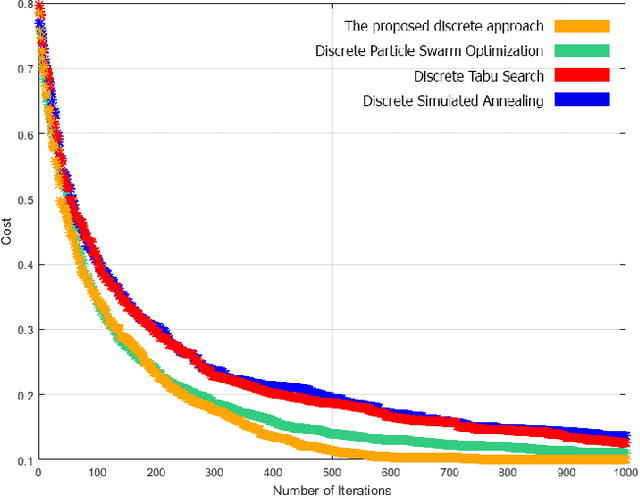
Abstract:The Internet of Things (IoT) is a paradigm characterized by a network of embedded sensors and services. These sensors are incorporated to collect various information, track physical conditions, e.g., waste bins' status, and exchange data with different centralized platforms. The need for such sensors is increasing; however, proliferation of technologies comes with various challenges. For example, how can IoT and its associated data be used to enhance waste management? In smart cities, an efficient waste management system is crucial. Artificial Intelligence (AI) and IoT-enabled approaches can empower cities to manage the waste collection. This work proposes an intelligent approach to route recommendation in an IoT-enabled waste management system given spatial constraints. It performs a thorough analysis based on AI-based methods and compares their corresponding results. Our solution is based on a multiple-level decision-making process in which bins' status and coordinates are taken into account to address the routing problem. Such AI-based models can help engineers design a sustainable infrastructure system.
Feature Importance-aware Graph Attention Network and Dueling Double Deep Q-Network Combined Approach for Critical Node Detection Problems
Dec 03, 2021
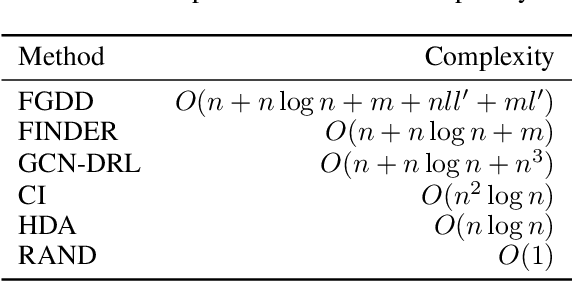
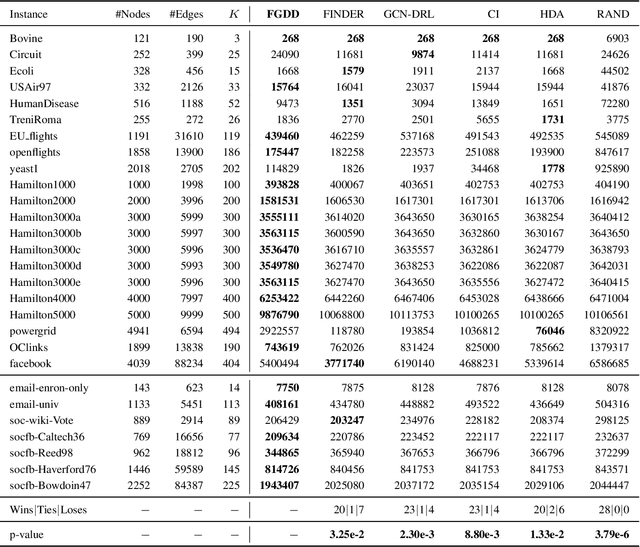
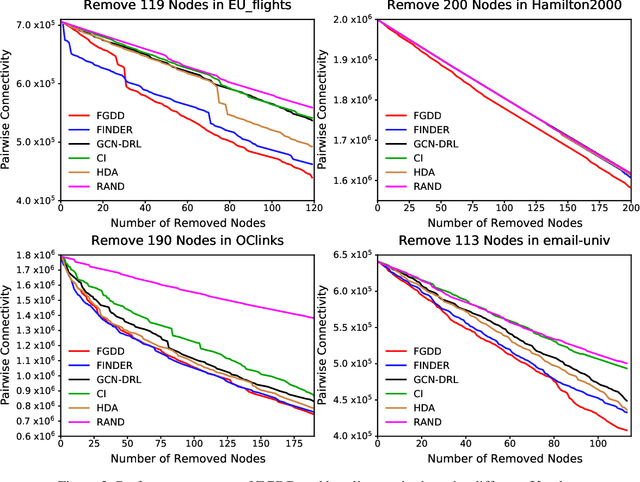
Abstract:Detecting critical nodes in sparse networks is important in a variety of application domains. A Critical Node Problem (CNP) aims to find a set of critical nodes from a network whose deletion maximally degrades the pairwise connectivity of the residual network. Due to its general NP-hard nature, state-of-the-art CNP solutions are based on heuristic approaches. Domain knowledge and trial-and-error are usually required when designing such approaches, thus consuming considerable effort and time. This work proposes a feature importance-aware graph attention network for node representation and combines it with dueling double deep Q-network to create an end-to-end algorithm to solve CNP for the first time. It does not need any problem-specific knowledge or labeled datasets as required by most of existing methods. Once the model is trained, it can be generalized to cope with various types of CNPs (with different sizes and topological structures) without re-training. Extensive experiments on 28 real-world networks show that the proposed method is highly comparable to state-of-the-art methods. It does not require any problem-specific knowledge and, hence, can be applicable to many applications including those impossible ones by using the existing approaches. It can be combined with some local search methods to further improve its solution quality. Extensive comparison results are given to show its effectiveness in solving CNP.
On the Philosophical, Cognitive and Mathematical Foundations of Symbiotic Autonomous Systems (SAS)
Feb 11, 2021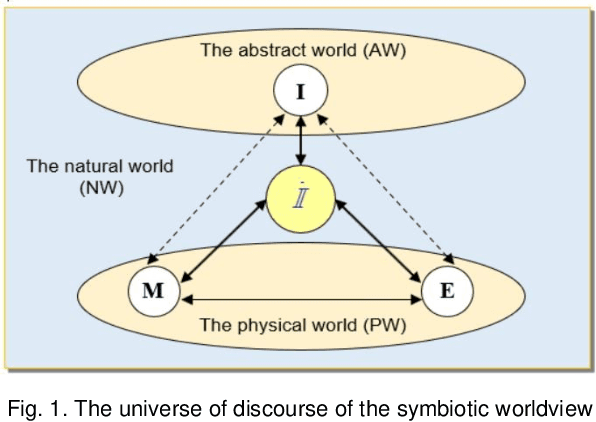

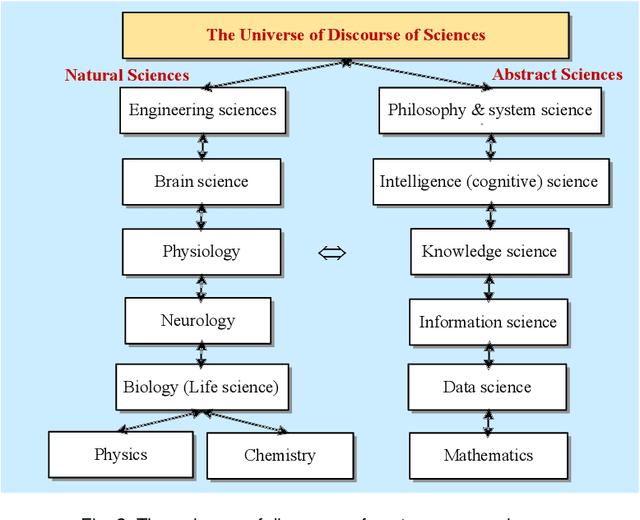
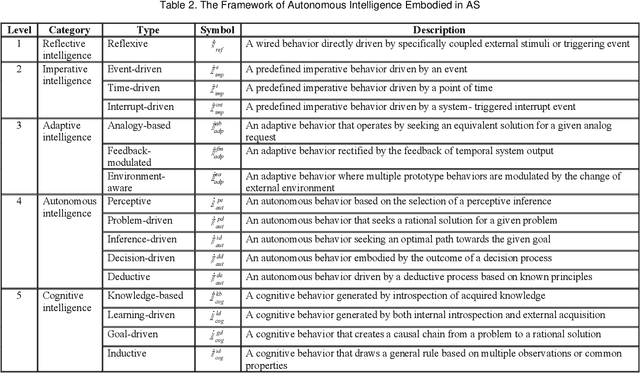
Abstract:Symbiotic Autonomous Systems (SAS) are advanced intelligent and cognitive systems exhibiting autonomous collective intelligence enabled by coherent symbiosis of human-machine interactions in hybrid societies. Basic research in the emerging field of SAS has triggered advanced general AI technologies functioning without human intervention or hybrid symbiotic systems synergizing humans and intelligent machines into coherent cognitive systems. This work presents a theoretical framework of SAS underpinned by the latest advances in intelligence, cognition, computer, and system sciences. SAS are characterized by the composition of autonomous and symbiotic systems that adopt bio-brain-social-inspired and heterogeneously synergized structures and autonomous behaviors. This paper explores their cognitive and mathematical foundations. The challenge to seamless human-machine interactions in a hybrid environment is addressed. SAS-based collective intelligence is explored in order to augment human capability by autonomous machine intelligence towards the next generation of general AI, autonomous computers, and trustworthy mission-critical intelligent systems. Emerging paradigms and engineering applications of SAS are elaborated via an autonomous knowledge learning system that symbiotically works between humans and cognitive robots.
* Accepted by Phil. Trans. Royal Society (A): Math, Phys & Engg Sci., 379(219x), 2021, Oxford, UK
 Add to Chrome
Add to Chrome Add to Firefox
Add to Firefox Add to Edge
Add to Edge